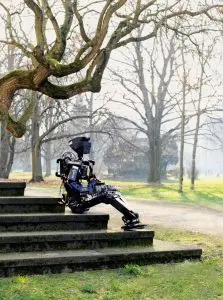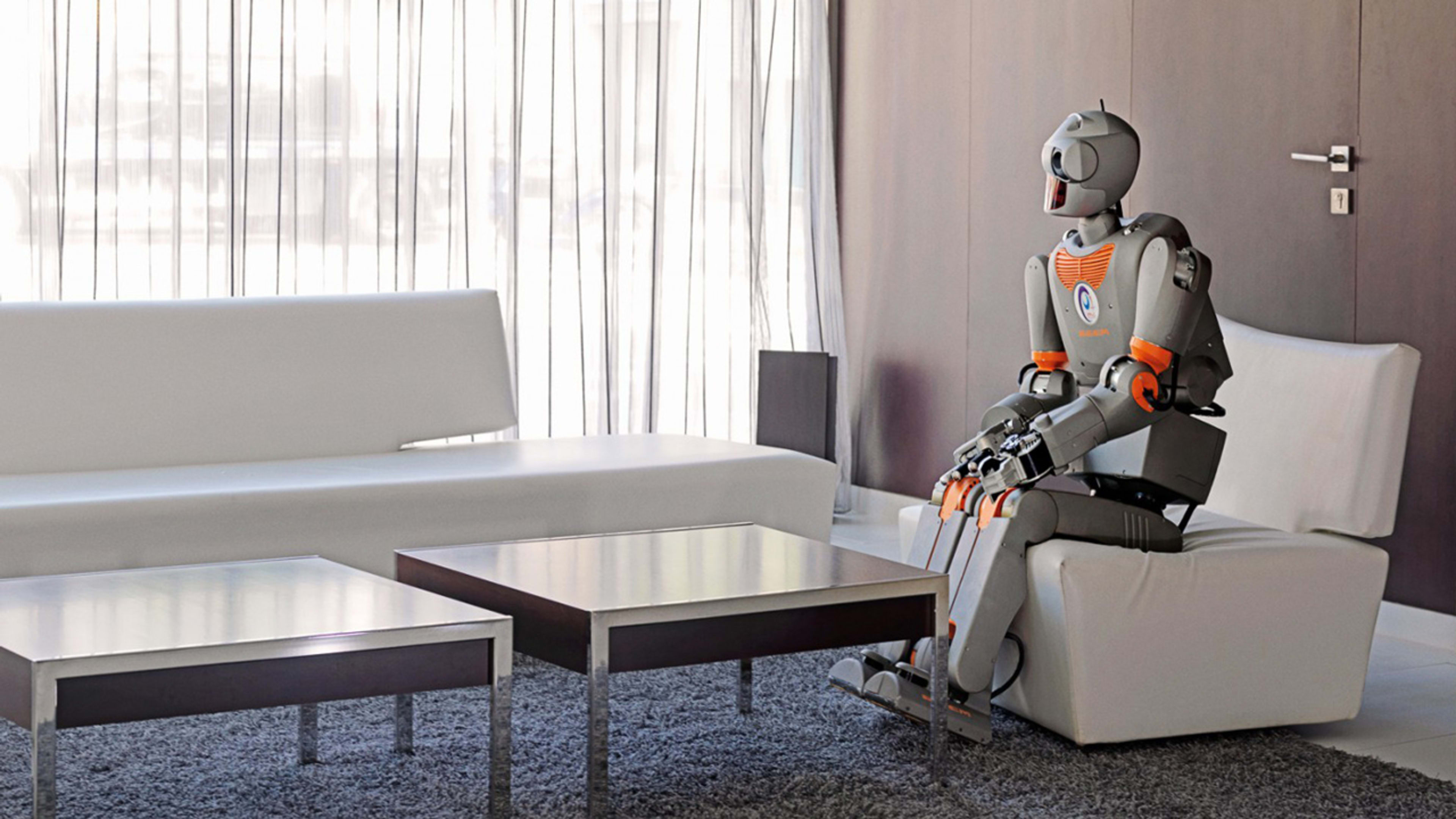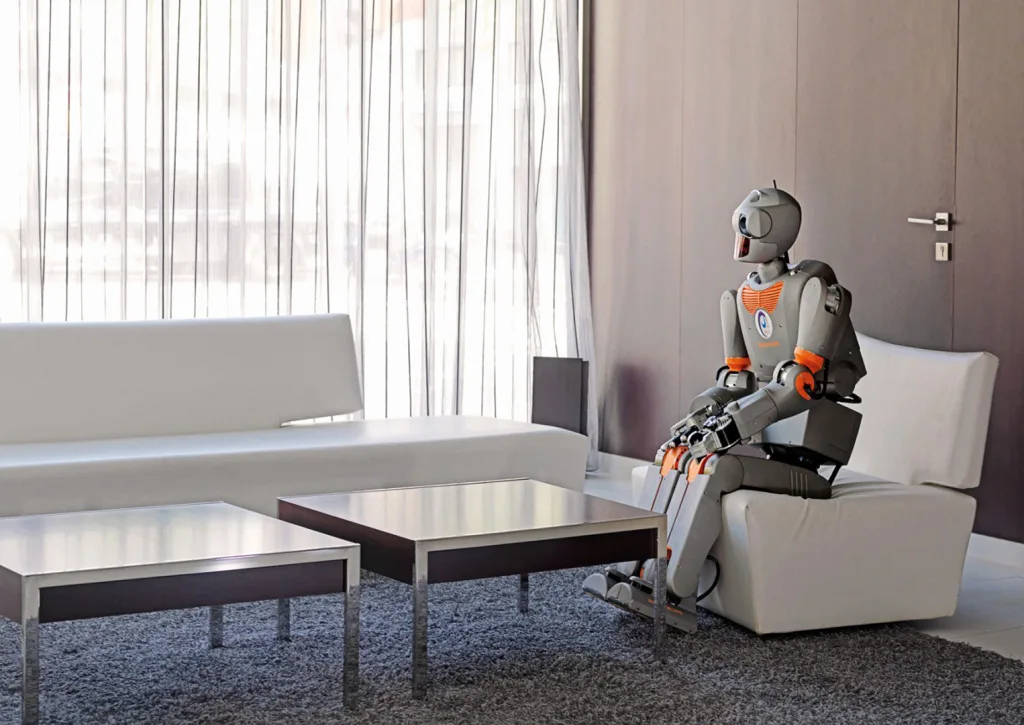One sits nervously and contemplatively in a waiting room. Another takes their first steps out of surgery, having just lost both arms. Still another sits on a few park steps, looking out to the trees and contemplating life. These are not people, mind you, but humanoid robots.
In collaboration with research institutions and private companies, photographer Vincent Fournier staged these automatons to elicit a maximum emotional reaction. In his series The Man Machine, Fournier wants us to look advanced robotics right in the eye and be equal parts attracted and repulsed.
The scenes are what he calls “speculative fictions.” Rather than simply documenting the robots as they are, he worked with groups ranging from Honda to the Eindhoven University of Technology to create stage micro-stories for the images. In one photo, two children wait for the Reem robot to shoot a basketball–they don’t seem to be marveling at their robotic teammate, instead, they’re impatient. In another, Asimo wanders through an art museum, only to look up in surprise, seemingly caught in the act.

Fournier was inspired by two separate academic interpretations of the uncanny, a word that typically refers to something that’s strange and unsettling. The first is the Uncanny Valley, a theory presented by Masahiro Mori, a robotics professor at the Tokyo Institute of Technology, in 1970. He argued the Uncanny Valley is what we feel when robots approach a fully convincing human visage–but don’t quite reach it. We’re repulsed by technology within that zone of nearly-but-not-quite-humanness. Fournier was also inspired by The Uncanny, an essay by Sigmund Freud, in which he discussed the sensation of seeing a reflection that made him jump because he thought it a stranger, only to realize a moment later that it was himself.

Ultimately, I’m not left with the disgust that Mori suggested we’d feel in such a situation, but rather, a deep pity, or maybe even pangs of guilt. These robots are surrogates for intelligent life. Thrown into everyday situations, they have neither the physical nor mental faculties to make sense of it all. The photos are a reminder that as robots fail to live up to our grandiose expectations, it will be our own fault.
Recognize your brand’s excellence by applying to this year’s Brands That Matter Awards before the early-rate deadline, May 3.





